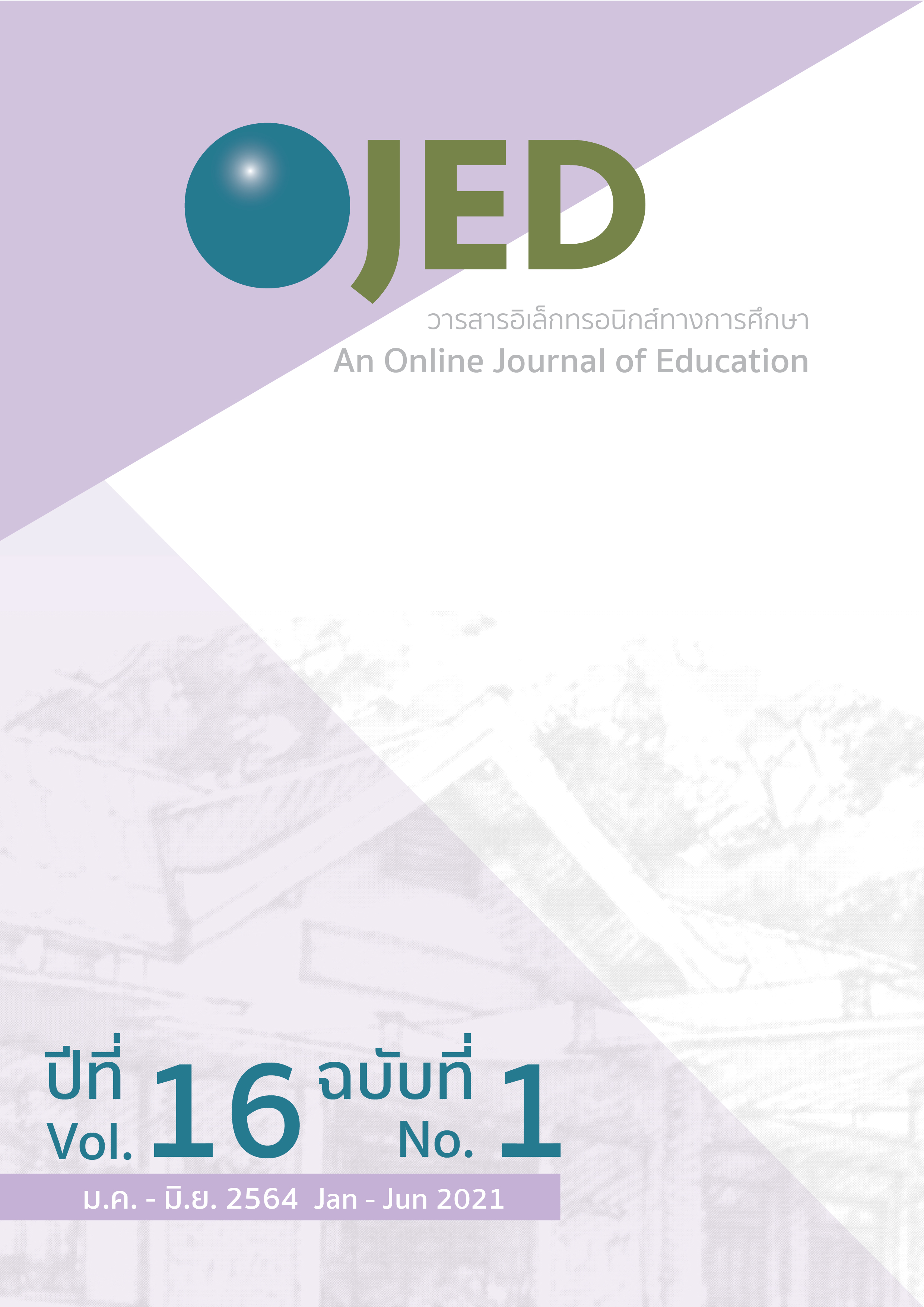The Combination of Direct and Indirect Written Corrective Feedback on Grammatical Accuracy in New Pieces of Writing of Upper Secondary School Students in Thailand
DOI:
https://doi.org/10.14456/ojed.2021.1Keywords:
the combination of written corrective feedback, direct and indirect written corrective feedback, grammatical accuracyAbstract
The purposes of this study were to investigate the transfer effects of the combination of written corrective feedback including direct and indirect corrective feedback on students’ grammatical accuracy in new pieces of writing and to compare the difference between providing the combination of written corrective feedback in different orders. The participants in this study were forty eleventh grade students. The participants were divided into two groups and provided with the combination of written corrective feedback which consisted of direct and indirect corrective feedback in different orders in each experimental phase. The study was conducted in the second semester of the academic year 2016. The comparison table of errors, and students’ interview were used as the research instruments. The data were analyzed by using means, standard deviation, and t-test. The findings revealed that the combination of written corrective feedback had transferring effects on students’ grammatical accuracy in their subsequent writing at a .01 significance level. When the effects of providing the combination of written corrective feedback in different orders were analyzed, the finding showed no significant difference in the grammatical accuracy improvement. Lastly, students were found to have positive attitudes towards direct written corrective feedback more than indirect written corrective feedback.
References
Bitchener, J., & Knoch, U. (2010). Raising the linguistic accuracy level of advanced L2 writers with written corrective feedback. Journal of second language Writing, 19(4), 207-217.
Chandler, J. (2003). The efficacy of various kinds of error feedback for improvement in the accuracy and fluency of L2 student writing. Journal of second language Writing, 12(3), 267-296.
Ellis, R. (2009). Corrective feedback and teacher development. L2 Journal, 1(1), 97-107
Ellis, R., Sheen, Y., Murakami, M., & Takashima, H. (2008). The effects of focused and unfocused written corrective feedback in an English as a foreign language context. System, 36(3), 353-371.
Evans, N. W., Hartshorn, K. J., McCollum, R. M., & Wolfersberger, M. (2010). Contextualizing corrective feedback in second language writing pedagogy. Language Teaching Research, 14(4), 445-463.
Ferris, D., & Helt, M. (2000). Was Truscott right?. Paper presented at the New evidence on the effects of error correction in L2 writing classes. The American Association of Applied Linguistics Conference, Vancouver, BC, Canada.
Ferris, D., & Roberts, B. (2001). Error feedback in L2 writing classes: How explicit does it need to be?. Journal of second language Writing, 10(3), 161-184.
Ferris, D. R. (2010). Second language writing research and written corrective feedback in SLA. Studies in Second Language Acquisition, 32(02), 181-201.
Ferris, D. R., Liu, H., Sinha, A., & Senna, M. (2013). Written corrective feedback for individual L2 writers. Journal of Second Language Writing, 22(3), 307-329.
Lalande, J. F. (1982). Reducing composition errors: An experiment. The Modern Language Journal, 66(2), 140-149.
Leow, R. P. (1997). Attention, awareness, and foreign language behavior. Language learning, 47(3), 467-505.
Purnawarman, P. (2011). Impacts of different types of teacher corrective feedback in reducing grammatical errors on ESL/EFL students’ writing. Virginia Polytechnic Institute and State University.
Rassaei, E., & Moinzadeh, A. (2011). Investigating the effects of three types of corrective feedback on the acquisition of English Wh-question forms by Iranian EFL learners. English Language Teaching, 4(2), 97.
Schmidt, R. W. (1990). The role of consciousness in second language learning1. Applied Linguistics, 11(2), 129-158.
Sheen, Y. (2010). Differential effects of oral and written corrective feedback in the ESL classroom. Studies in Second Language Acquisition, 32(02), 203-234.
Swain, M. (1985). Communicative competence: Some roles of comprehensible input and comprehensible output in its development. Input in second language acquisition, 15, 165-179.
Truscott, J. (2007). The effect of error correction on learners’ ability to write accurately. Journal of Second Language Writing, 16(4), 255-272.
Truscott, J., & Hsu, A. Y. P. (2008). Error correction, revision, and learning. Journal of Second Language Writing, 17(4), 292-305.
Van Beuningen, C. G., De Jong, N. H., & Kuiken, F. (2012). Evidence on the effectiveness of comprehensive error correction in second language writing. Language learning, 62(1), 1-41.
Downloads
Published
How to Cite
Issue
Section
License

This work is licensed under a Creative Commons Attribution-NonCommercial-NoDerivatives 4.0 International License.




